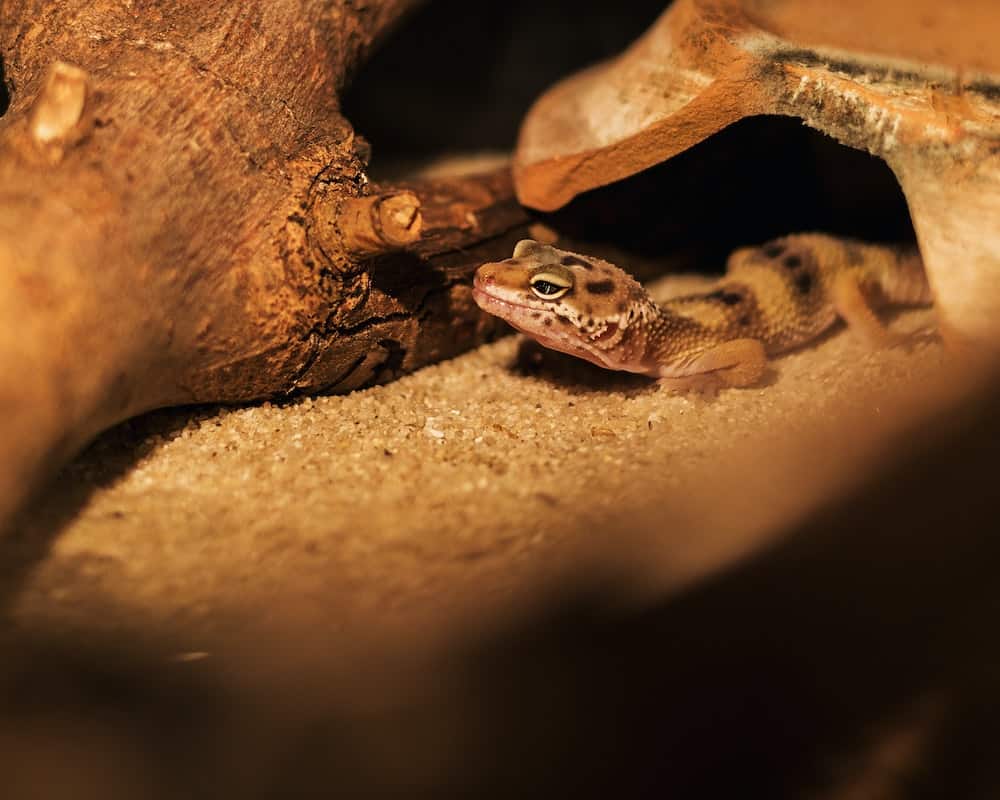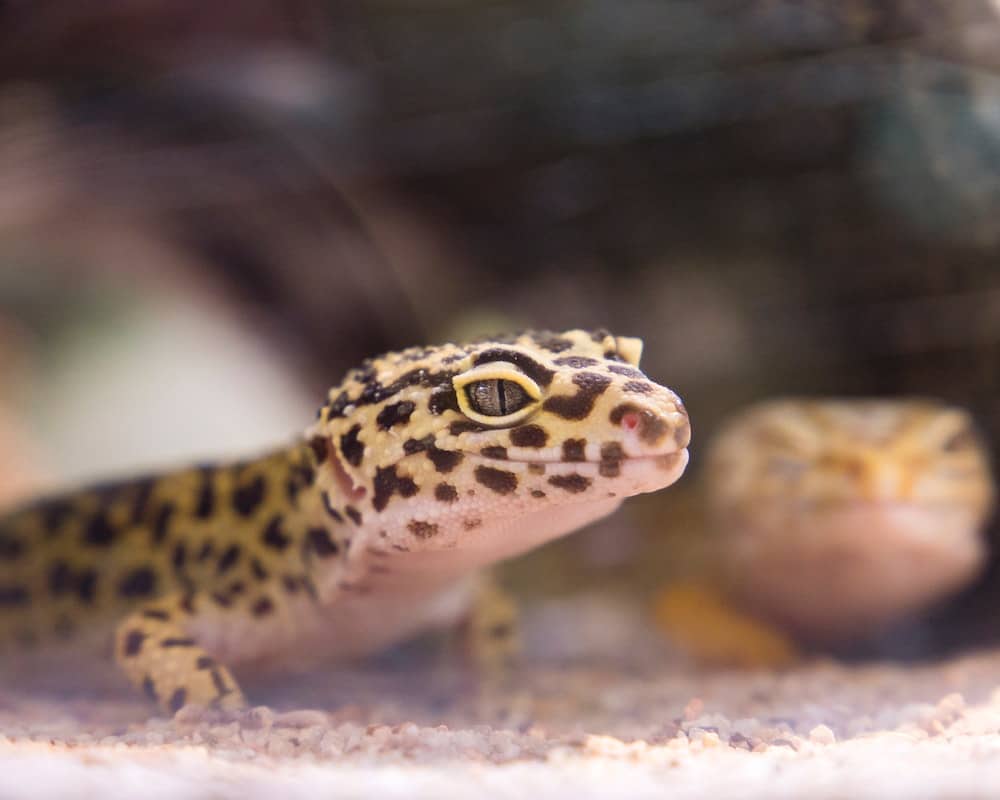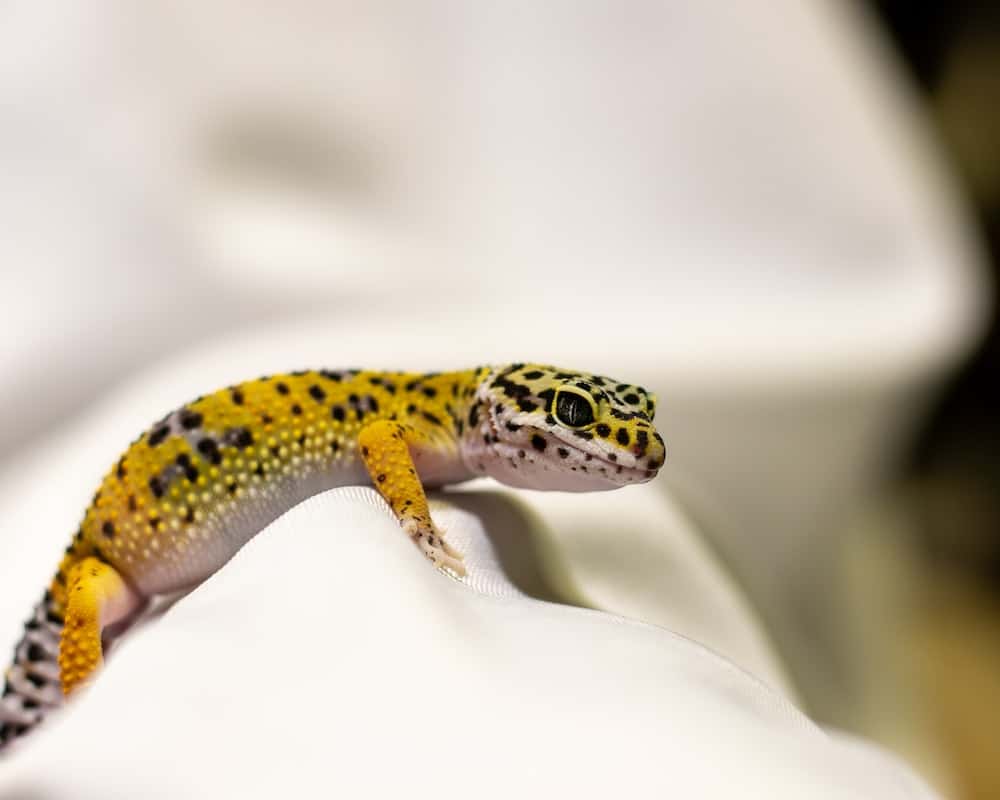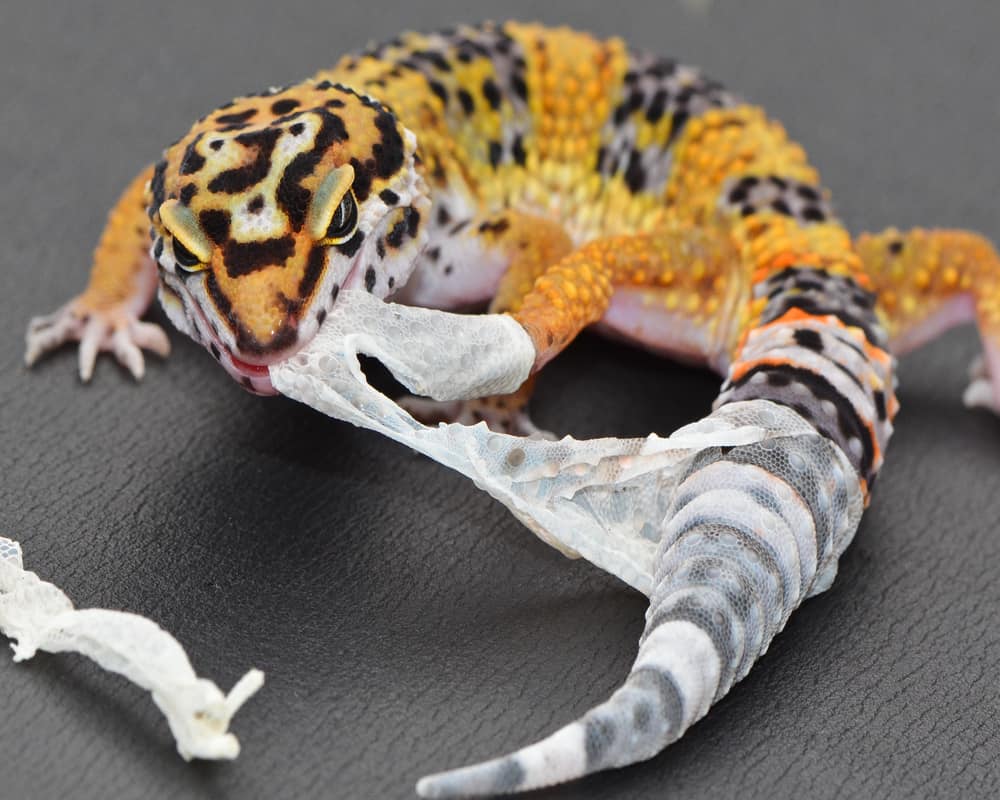Leopard geckos may dig to control their body temperature, avoid stress and danger, build a nest, search for food, or investigate their surroundings. Preventing anxiety and promoting health can be accomplished by providing a proper environment with sufficient substrate, monitoring temperature and humidity conditions, and a varied and nutritious diet.
Top 6 Reasons for Digging Behavior Of Leopard Geckos
Leopard gecko keepers could observe their pets engaging in digging activities. There may be innate and natural motivations for leopard geckos to dig and environmental and health-related motivations. We’ll go over some of them below.
- To Regulate Body Temperature
Because these pets are cold-blooded and take heat from their surroundings, leopard geckos must constantly absorb heat to stabilize their body temperature.
Leopard geckos devote their lives to dry regions with extreme temperature changes between the day and night. They prefer dry, arid environments and are so endemic to certain areas.
During the daytime, the desert’s surface or the environment for leopard geckos could reach overwhelmingly high temperatures. At the same time, at night, it could considerably become a little cool and suitable for these pets.
These pets will burrow deeper into the sand to reach a cooler location throughout the day. This helps them avoid becoming overheated.
Through burrowing, they can avoid prolonged exposure to the scorching heat and locate a temperature that is more comfortable as a result. Leopard geckos are usually seen coming out of their hideouts in the underground when it’s cooler outside, and also they are typically seen coming out at night.
Some of these animals in captivity can dig to control their body temperature further if the temperature range they are exposed to within their enclosure is insufficient.
In the gecko’s enclosure, you should have both hot and cold zones such that the hot reaches up to 85-90 degrees Fahrenheit and the cooler one is between 75-80 degrees Fahrenheit.
You must supply your leopard gecko pets with an appropriate heat source, which might include a lamp with heat or an under-tank warming pad, and monitor the variance in temperatures on an ongoing basis to ensure that it is suitable for the needs of their pet.
If the source of light or heat you give is not in the range of these pet animals, they might also start digging somewhere nearby and find refuge or rest there to control their body temperatures. This is because leopard geckos require a high body temperature to survive.
- To Escape Stress And Danger
Because of their status as prey in the environment, leopard geckos have an innate drive to avoid stressful situations. These pets, when threatened, may dig as a defense mechanism.
Caves are a common survival strategy for leopard geckos outdoors, both from potential predators and the elements.
For leopard geckos, digging is one of the main stress relief activities they commonly involve, regardless of whether they are caged or left outside. If the leopard gecko feels threatened, such as when a new creature or person has been introduced to the home, it may dig to move to a safer and less stressful location.
This can happen if the leopard gecko has nowhere to go when frightened, such as without caves or shelters in the enclosure.
Proper substrate, hiding areas, and enrichment are all essential components of this animal’s ideal environment. Providing a safe and exciting environment is crucial to reduce the likelihood that they will dig as a stress response.
If you notice that your pet animal is acting out, you should watch its surroundings and escape from all the loud noises or disturbances in its area. You should always handle your gecko with extra care as they are incredibly fragile and feel stressed if they get hurt by you.
- To Create A Nesting Site
You may notice that your leopard is digging in the area where it is caged. You don’t need to worry if it is a female one. Female geckos may dig to make a safe area to lay their eggs.
These female pets are usually found digging in their captivity with the motive of making a nest. You can look at how a female leopard gecko is digging here.
In the wild, female leopard geckos will excavate a burrow to deposit their eggs. They will take great care in selecting a site that is safe from potential threats and has the appropriate temperature and humidity for their eggs to hatch successfully.
You should always ensure that the cage they are kept in has the appropriate soil depth for these female geckos to dig. Not just the soil you should also see that the environment is also suited for these geckos laid eggs to survive and be in.
You should also ensure the cage’s moisture level should not be maintained at high or low levels. Otherwise, the eggs laid may break or get a crack at a pre-matured stage only.
After she has finished laying eggs, the female leopard gecko will likely cover the nest with the substrate to shield the eggs from predators and recreate the conditions in the wild.
- To Find Food
In their natural habitat, these geckos would search the ground and scrape through the sand to locate insects, their primary nutrition source. They have keen claws, which enable them to dig into the sandy soil and apply their sense of smell to find prey in addition to their ability to dig.
Digging is a behavior that leopard geckos kept in captivity may engage in when they are starving and looking for something to eat. These geckos will likely dig to expose the potential hiding place of their prey.
Even if you give these animals enough nutrients in their food, they are still very intrigued by nature and will continuously dig and try to find any insect hiding in the soil around them.
- Explore
Leopard geckos are intrigued by nature. So, if these pets discover plenty of soil, they will start digging in their surroundings. One of the possible motivations for a leopard gecko to dig in the dirt can be simply exploring its surroundings.
You should always try to put more plants and maybe just some more sand in your leopard gecko’s captivity, as this is their favorite pastime and keeps them involved.
- Shedding Process
Your leopard gecko sheds when it is under a lot of stress or if they are upset. They always like to shed when they are hidden from you.
So, if your gecko cannot find the perfect hideout in its captivity, it may show digging behavior due to frustration or stress. If your gecko’s skin color has become pale or grayish, then shedding is the definite reason behind its showing digging behavior.
What To Do If Your Leopard Gecko Is Digging Excessively?
Given that leopard geckos are known for being diggers, an environment supporting this expected behavior is crucial.
However, excessive digging by your leopard gecko could indicate stress or an unsuitable setting. The first step is to ensure your gecko’s home has adequate soil for them to dig in and a suitable hiding spot.
Ensure the habitat’s humidity and temperature are within the acceptable ranges for leopard geckos.
First, you should ensure that the environment these geckos are kept in is ideal for them to dig, stay, or lay their eggs.
But after assuring these environmental factors, if these pets are still digging, they are going through some illness, and you should bring them to a vet to diagnose the reason for their digging activity.
Taking your pet to a vet becomes very crucial after a certain point. You should check that your vet specializes in your pet’s category.
After the vet has examined your pet thoroughly and prescribed some medicine or treatment, you should follow it seriously, or else your pet will develop a chronic illness.
Conclusion
In conclusion, you should be aware that these leopard geckos may be digging for several reasons, like illness, laying eggs, or just out of curiosity.
You should be aware of all these reasons, almost all of which have been discussed in the article above. You should be able to facilitate your pet’s behaviors by creating an appropriate habitat.
Preventing stress and promoting health can be accomplished by providing a varied and nutritious meal, careful management of temperature and humidity, and a safe place to nest. You can ensure your pet’s health and well-being by giving detailed attention to their movements and habits.




